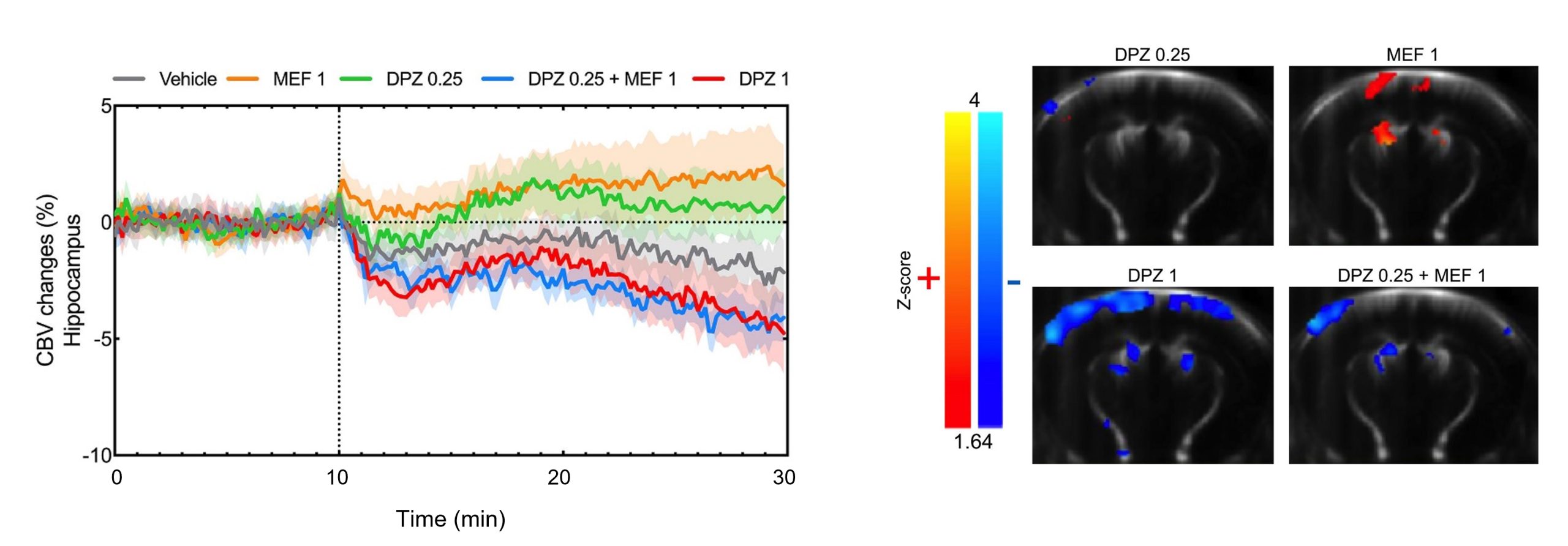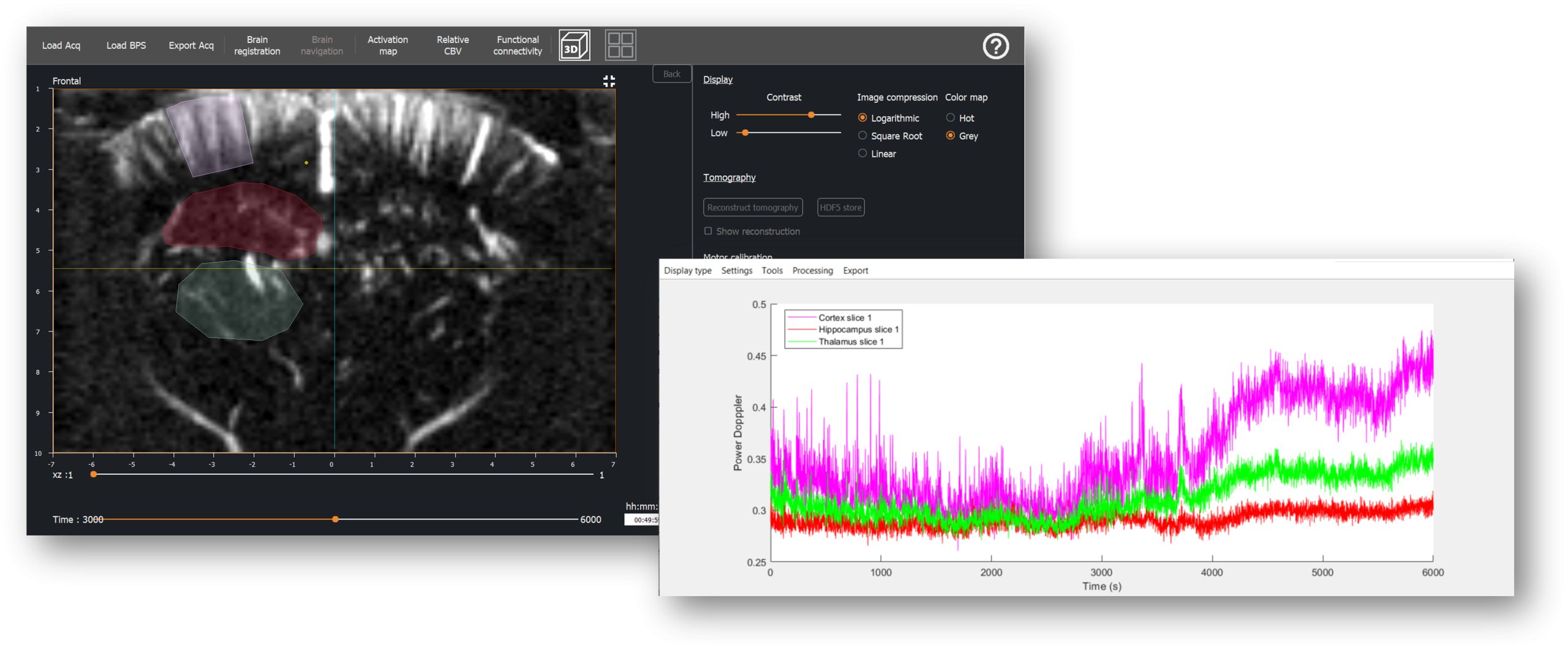Neuropharmacology
Neuropharmacology
In a similar way to fMRI, functional ultrasound can be used in neuropharmacology studies to determine time- and dose-dependent effects of drugs on the brain. But unlike fMRI, this ‘pharmaco-fUS’ approach is more sensitive, faster, more reproducible, and compatible with awake animals (eliminating the bias of anesthesia).
Investigating the effect of drugs on functional connectivity
In this study, it was shown that scopolamine (used preclinically as a model for Alzheimer’s disease) leads to rapid and lasting changes in functional connectivity between the two hemispheres of the hippocampus and the neighboring areas of the cortex.
Investigating the effect of drugs on changes in cerebral blood volume
The first of these (shown in the figure) found a synergistic brain response between an AChE inhibitor (donepezil) used to alleviate cognitive symptoms in Alzheimer’s disease and a new drug (mefloquine) targeting connexins. Importantly, this fUS study also complements previous work that showed how the drug combination could reverse scopolamine-induced memory loss, by providing detail on the areas affected.
In the second study (Vidal et al., Neuropharmacology, 2020), the effect of atomoxetine (a potent norepinephrine reuptake inhibitor and treatment for ADHD) was investigated in anesthetized rats. A dose-dependent variation of CBV with time was observed, particularly in brain regions involved in vision.
For more on the potential of fUS in this field, take a look at our webinar “Functional ultrasound imaging in pain and pharmacology research”, presented by Dr Sophie Pezet and Dr Benjamin Vidal (authors of the above-mentioned papers).


